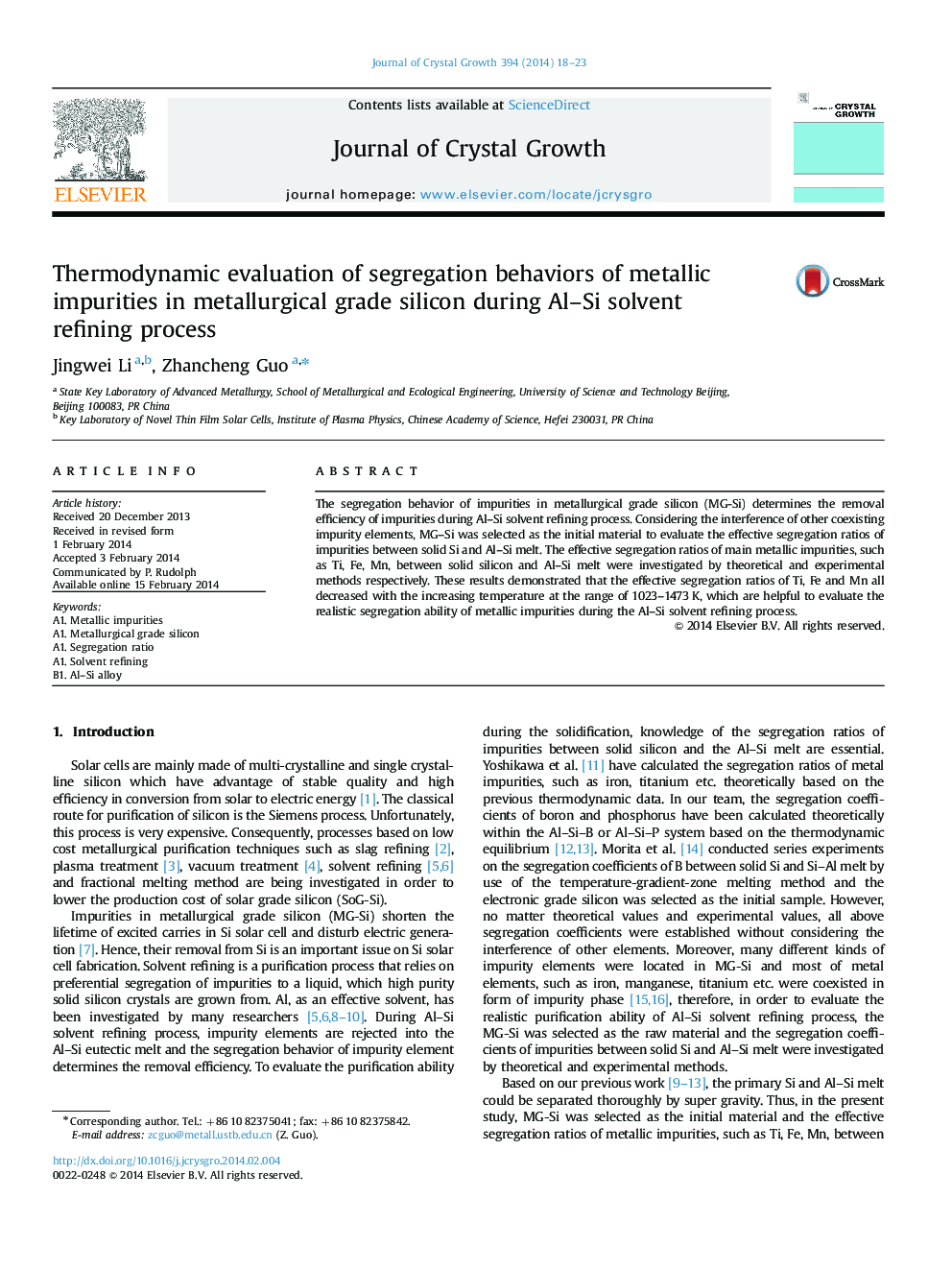| کد مقاله | کد نشریه | سال انتشار | مقاله انگلیسی | نسخه تمام متن |
|---|---|---|---|---|
| 1790462 | 1524435 | 2014 | 6 صفحه PDF | دانلود رایگان |

• Considering the interference of other coexisting impurity elements, the effective segregation ratios were calculated based on metallurgical grade silicon.
• The effective segregation ratios of boron between solid silicon and AlSi melt verified the feasibility of the two different calculation methods.
• The effective segregation ratios of Ti, Fe and Mn between solid silicon and AlSi melt decreased with the increasing temperature at the range of 1023–1473 K.
• The segregation ability under non-ideal conditions of metallic impurities during the AlSi solvent refining process was evaluated.
The segregation behavior of impurities in metallurgical grade silicon (MG-Si) determines the removal efficiency of impurities during AlSi solvent refining process. Considering the interference of other coexisting impurity elements, MGSi was selected as the initial material to evaluate the effective segregation ratios of impurities between solid Si and AlSi melt. The effective segregation ratios of main metallic impurities, such as Ti, Fe, Mn, between solid silicon and AlSi melt were investigated by theoretical and experimental methods respectively. These results demonstrated that the effective segregation ratios of Ti, Fe and Mn all decreased with the increasing temperature at the range of 1023–1473 K, which are helpful to evaluate the realistic segregation ability of metallic impurities during the AlSi solvent refining process.
Journal: Journal of Crystal Growth - Volume 394, 15 May 2014, Pages 18–23